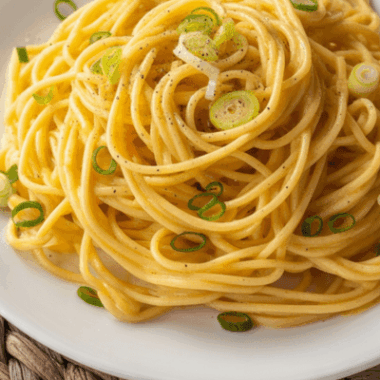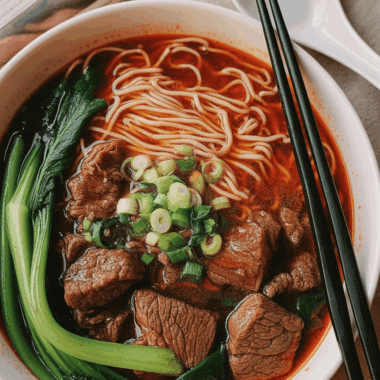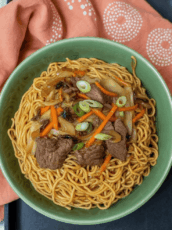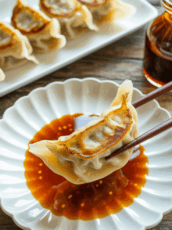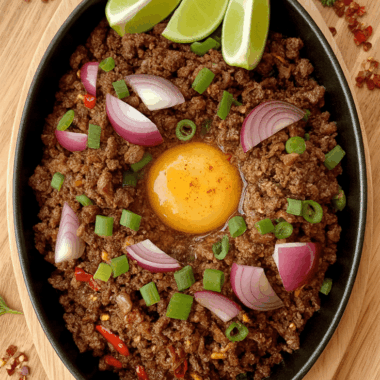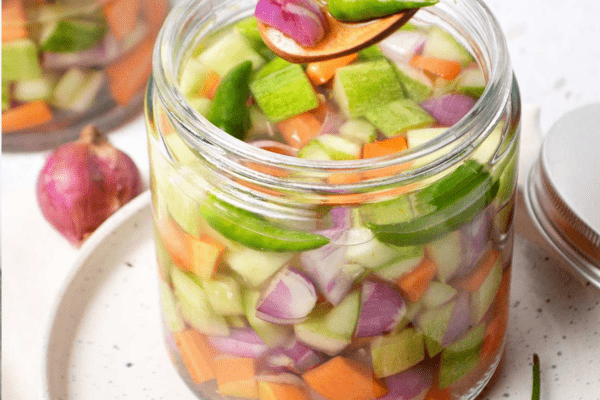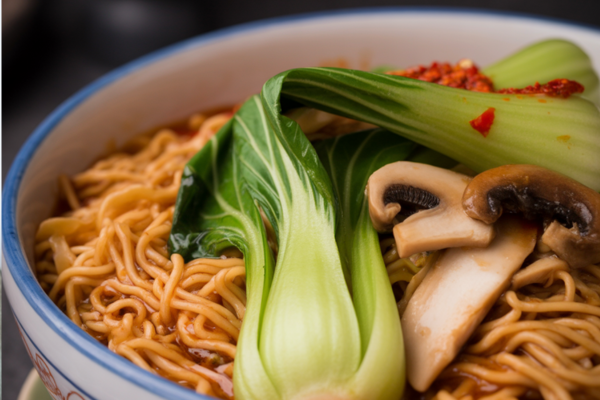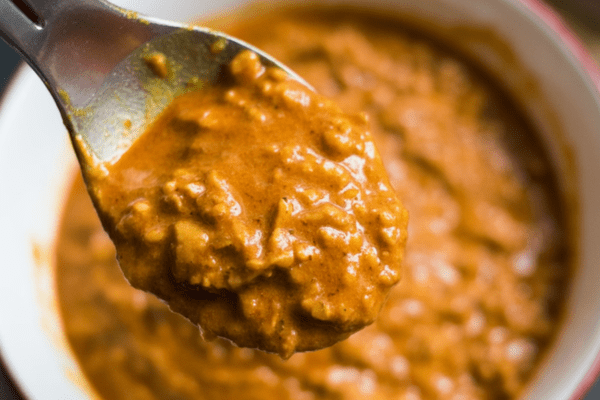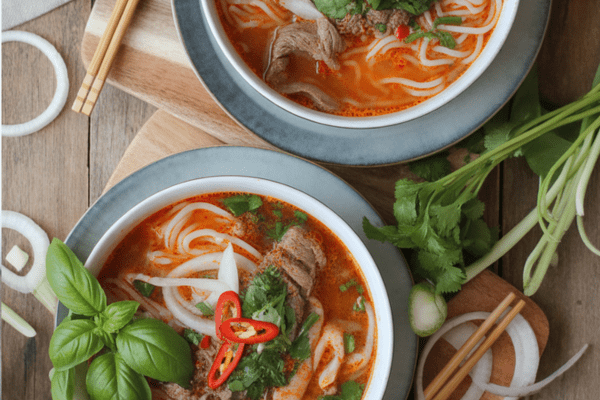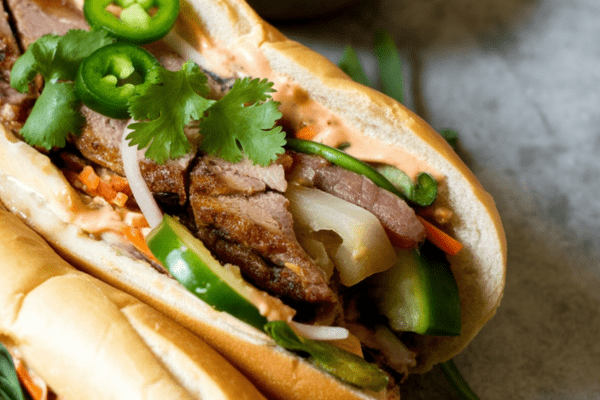This Japanese Salmon Rice is one of those humble, heartwarming dishes I find myself going back to every year as the weather shifts and autumn settles in. It’s the kind of one-pot comfort meal that comes together quietly, letting a few good ingredients do all the talking. Tender, lightly salted salmon steamed over fluffy short-grain rice with a hint of umami from konbu and sake — it’s simple, honest food that fills you up without weighing you down.
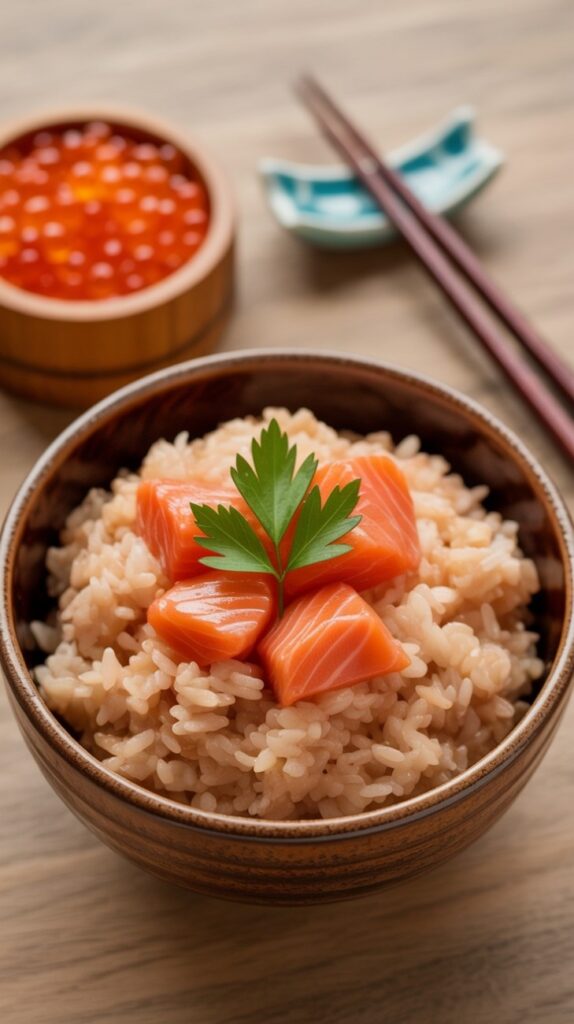
A Cozy Autumn Tradition
Back home, I grew up eating fish and rice in many forms, but this Japanese-style preparation feels extra special. The first time I made it, I was blown away by how such a gentle cooking method — steaming the fish right on top of the rice — brings out so much flavor. No oil, no fuss, just salt, steam, and a little patience.
In Japan, this dish is a seasonal favorite during early fall when salmon is fresh and plentiful. And while I’m not exactly strolling through Japanese markets filled with Asian pears and fresh akijaké, I do like to browse my local store for a good salmon fillet and make this dish when the air turns a little cooler and rice feels like the right thing to put on the stove.
A Note About Harako Meshi
There’s a beautiful version of this dish from Sendai called Harako Meshi, where the steamed salmon rice is topped with ikura (salmon roe). It’s like a cousin to Oyakodon — the whole parent-and-child idea — but from the sea. I’ve made it a couple of times when I could find good ikura, and it really is something special. But honestly, even without the roe, this dish stands strong on its own.
Why This Simple Dish Works So Well
This dish is all about letting ingredients speak for themselves. Here’s what makes it shine:
- Salting the salmon pulls out excess moisture and intensifies the flavor. It also gets rid of that strong fishy aroma that sometimes turns people off.
- Sake and konbu sneak in layers of umami without overpowering the rice — it’s subtle but deep.
- Steaming the salmon over rice (rather than cooking it with the rice from the start) keeps the fish tender and prevents it from drying out. This is a key move I picked up after a few trial runs.
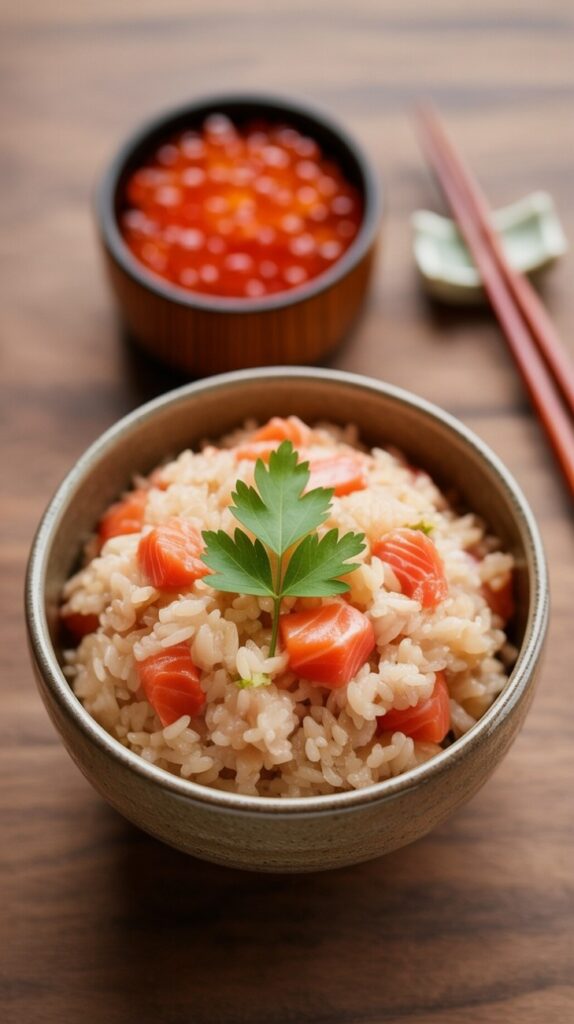
What You’ll Need
Let’s walk through the ingredients and why they matter:
- Salmon – You don’t need anything fancy. I use whatever fillet I can get my hands on, but it should be skin-on and preferably boneless. If you’re lucky enough to get seasonal fall salmon, even better.
- Salt – I use regular table salt. If you’re using sea salt or flaky salt, you might need to adjust slightly. The goal is to cure the salmon gently, not overwhelm it.
- Rice – Japanese short-grain rice is a must here. It has that perfect soft, sticky texture that holds the salmon flakes beautifully. If it’s rice harvest season where you are, keep an eye out for new crop rice — it’s slightly sweet and incredibly tender.
- Konbu – Just a small piece adds that deep background of umami. I always keep some in my pantry for soups and rice dishes like this.
- Sake – Besides the flavor, it also softens the rice and gives it a nice aroma. I use a cooking sake, but regular drinking sake works fine too.
- Optional Toppings – If I have ikura or fresh mitsuba on hand, I’ll sprinkle them over the top. More often than not, I go with chopped scallions and sometimes a little butter for a fusion twist. Warm butter melting over rice and salmon? Don’t knock it till you try it.
Let’s Cook This Together
Step 1: Prep the Salmon
I always start by checking the salmon for pin bones. A clean pair of kitchen tweezers works best, and I usually get this done while catching up on a podcast. Once the bones are out, slice the fillet into thick 1-inch strips — not too thin, or they’ll dry out.
Rub the fish with salt on all sides and let it rest on a paper towel-lined tray in the fridge overnight. This dry brining step not only seasons the fish but firms it up a bit. I usually do this the night before and forget about it till the next day.
Step 2: Wash and Soak the Rice
Give your short-grain rice a good rinse until the water runs mostly clear. Then let it soak in water with konbu and sake for at least 20 minutes. This soak ensures even cooking and gives the rice a beautifully fluffy finish.
Step 3: Cook the Rice
Use a thick-bottomed pot with a tight lid — I use my trusty Dutch oven. Bring it to a boil, then reduce the heat and let it simmer gently for 12 minutes. Keep that lid shut; no peeking!
Step 4: Steam the Salmon
After 12 minutes, gently place the salted salmon slices on top of the rice and cover immediately. Turn off the heat and let the whole thing steam for 15 minutes. That gentle finish is what keeps the salmon soft and moist.
Step 5: Flake and Mix
Carefully remove the fish, peel off the skin (it comes off easily at this point), and check for any bones. Flake it with a fork or chopsticks and gently fold it back into the rice using a rice paddle or spatula.
What I Like to Serve With This
This dish is perfect on its own, but if I’m putting together a full meal, I like to keep things simple and seasonal:
- A bowl of miso soup with mushrooms
- Pickled cucumbers or daikon
- Lightly blanched greens with sesame dressing
- Or, if I’m feeling lazy, just a little soy sauce and some hot green tea on the side
The leftovers make incredible salmon onigiri for lunchboxes, or you can turn it into ochazuke by pouring hot green tea or dashi over a bowl of the rice the next morning.
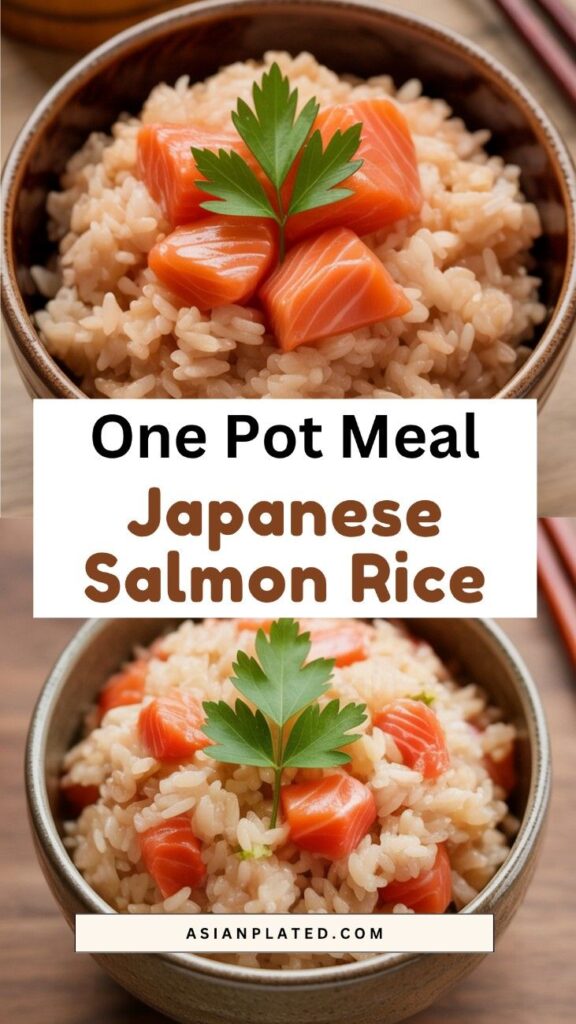
Frequently Asked Questions
Can I use frozen salmon?
Absolutely, just thaw it completely and pat it dry before salting. I do this all the time with store-bought frozen fillets.
What if I don’t have konbu?
You can skip it, but the rice won’t have that same background depth. If you have a dash of soy sauce or a pinch of dashi granules, those can add similar umami.
Is it okay to make the salmon ahead of time?
Yes! Once salted, the salmon can hang out in the fridge for up to 5–6 days. That makes this recipe great for meal prep.
Japanese Salmon Rice
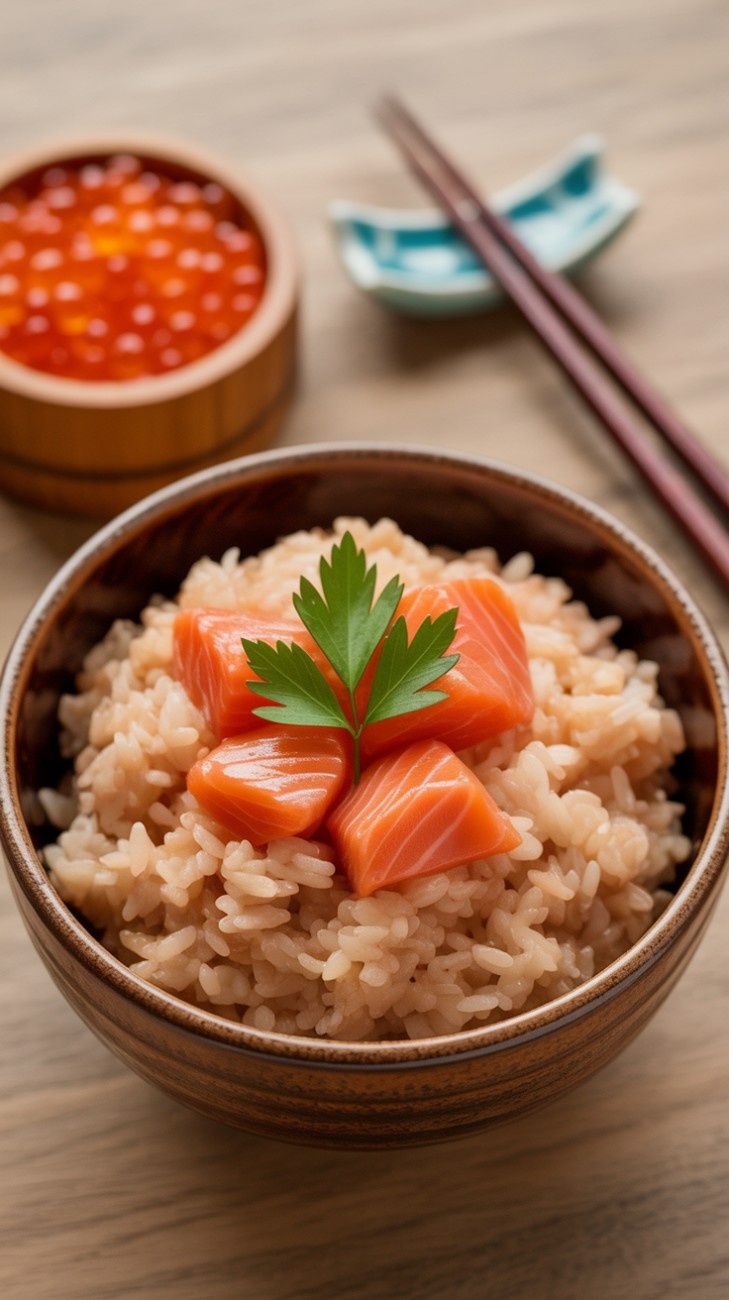
This cozy pot of salmon rice is pure comfort in a bowl—simple ingredients, delicate flavors, and that unmistakable warmth of a home-cooked Japanese meal. Lightly salted salmon is gently steamed over fluffy short-grain rice infused with kombu and sake. It’s a one-pot wonder you’ll want to make again and again.
Ingredients
- 220 grams salmon fillets, sliced about 1-inch thick (bones removed)
- 300 grams Japanese short-grain rice (about 1½ cups)
- 1 teaspoon salt
- 1 tablespoon sake
- 1¾ cups water
- A 2-inch square of kombu (dried kelp)
- Mitsuba (Japanese parsley), optional for garnish
- Ikura (salmon roe), optional for topping
Instructions
- Salt the Salmon: Start by lightly curing the salmon. Sprinkle salt evenly over both sides of the fillets and place them on a few layers of paper towel set over a rack. Pop it in the fridge overnight—this helps to firm up the fish and brings out its flavor.
- Prepare the Rice: The next day, rinse the rice under cold water using a strainer until the water runs nearly clear. Drain well, then transfer the rice to a thick-bottomed pot. Add the water, sake, and the piece of kombu. Cover with a lid and let everything soak for at least 20 minutes.
- Cook the Rice: Once the rice is done soaking, bring the pot to a boil over high heat. As soon as it boils, lower the heat to a gentle simmer and cook for 12 minutes without lifting the lid.
- Steam the Salmon: When the 12 minutes are up, carefully open the lid (it’ll be hot!), and gently place the salmon on top of the cooked rice. Close the lid immediately, turn off the heat, and let it sit to steam for 15 minutes.
- Flake & Mix: After steaming, lift out the salmon and let it cool slightly. Remove the skin and any remaining bones, then flake the fish. Stir it back into the warm rice, letting the flavors meld together.
Final Thoughts
This is one of those dishes that brings comfort without needing too much effort. Just a little prep, good timing, and letting the ingredients do their thing. It’s become part of my early autumn routine, and every time I make it, it feels like a quiet celebration of seasonal cooking — nothing fancy, just honest food that warms you up.
Try other Japanese Recipes:

